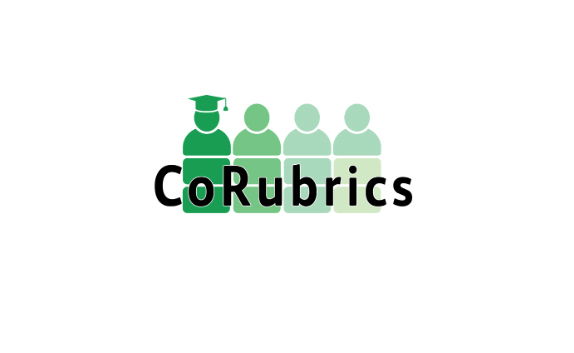
| Title of the resource/tool | CORUBRICS |
| Language of the resource | English, Catalan, Euskera, French, Spanish |
| Type of the resource/tool | Software/tool |
| Field of application | Digital communication Digital collaboration Creation of tests, quizes Virtual feedback Virtual assessment |
| Methodology of using the resource/ tool |
CoRubrics is a plugin for Google spreadsheets that allows you to carry out a complete evaluation process with rubrics. It is used for the teacher to evaluate the students (or groups of students) with a rubric and also for the students to co-evaluate each other with a rubric. It can only be used if students and teachers are in the same G suite domain. First we will have to define the rubric we want to use and then indicate the students and their email addresses. Once done, the plugin (or template) will take care of: Create a form with the contents of the Rubric. Send this form by mail to the students or give us the link (if only corrected by the teacher). Once the form has been answered (by the students or by the teacher), process the data to obtain the averages. Finally, send the results to the students (each one only receives their result) with a personalized comment. In addition, CoRubrics allows: Make comments when the rubric is answered. Allow Peer-evaluation, Self-evaluation and the teacher’s evaluation in a single CoRubrics. |
| Main functionalities |
Corubrics has several advantages over other tools and that is that it allows three types of evaluation to be proposed: This gives the possibility that it is carried out in addition to a certain group of colleagues. Another aspect of the tool to highlight is that it allows the responses to be processed, obtaining a quantitative rating. The operation is as follows: 2- Send the form by mail to the students or obtain the link if only the teacher corrects. 3- Process the data to obtain the averages: In addition, the three differentiated evaluations appear: Two global notes are also offered. A first where the final score is the lowest aspect and a second where the score is the weighted average of the aspects. In addition, it also allows you to add comments, in the form of text, next to the note, to better guide the student in the interpretation of the scores. 4- Send the results and the comment to the students These two previous functionalities -analysis of results and submission of results- are the main features that differentiate Corubrics from other tools such as Rubistar, iRubric, which can offer the creation of a rubric through a template but cannot offer personalized submission. to the students. From the point of view of the students, the tool is easy to use, they only have to fill out a form. If mobile devices are used, it is done by touch and the process is streamlined. To facilitate the peer assessment and speed up the process, it is proposed that students can use their own devices (Bring Your Own Device BYOD) useful for environments where we do not have equipment (laboratories, playground, sports center…). To sum up, the main utility is that it is applicable to evaluate students individually or students in groups and also for evaluation only by the teacher or by co-evaluation of the students. The facility to create the form automatically and to send the results to the students by mail simplify the evaluation by rubrics.
|
| Link to the resource/tool | corubrics.org |
| Resource/tool operating mode |
Need software instalation Web-based |
| Operating systems |
Windows MAC Linux |
| Responsive design |
Desktop Tablet Mobile |
| Resource/tool can be used for |
Asynchronous learning |
| Access to the resources/tool for the user | No login needed |
| Privacy and security politics | corubrics.org/privacy |
| Pricing | Partially paid (for more features) |
Competencies improved using this tool
Assessment strategies.
Analysing evidence.
Feedback
Differentiation & personalitation
Creating and modifying
Managing, protection and sharing
Soft skills for digital tutors
